For over 5,000 years, cannabis has been used for natural and holistic healing. Its use dates back to the foundation of Traditional Chinese Medicine and the Chinese emperor Shen Nung, considered the father of Chinese Medicine, and the discovery that the healing benefits of the sacred plant once formed the backbone of medical practice.
A History of Cannabis
In ancient Egypt, cannabis was used to treat glaucoma, inflammation, and a host of other ailments. Cannabis pollen was even found on the mummy of Ramses II, who died in 1213 BC. Etymologists (those who study historic languages) believe that Hebrew writings from the book of Exodus describe cannabis extract as a primary ingredient in holy anointing oil.
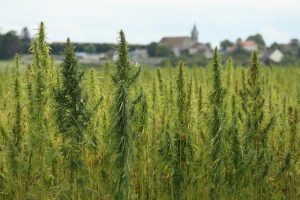
Greek and Roman cultures used cannabis for ear pain, edema, inflammation, gout, malaria, memory loss, and sexual dysfunction. In 79 AD, Pliny the Elder – a naturalist and natural philosopher of the Early Roman Empire – wrote the Naturalis Historia in which he recommends cannabis for treating cramped joints, gout, and violent pain.
Cannabis was also used in the Middle Ages, when hemp was a commonly found healing agent. According to respected author and historian Martin Booth, “During the Middle Ages, hemp was central to any herbalist’s medicine cabinet. William Turner the Naturalist, considered the first English botanist, praises it in his New Herball, published in 1538.”
The Age of Persecution
In 1850, it was officially added to the U.S. Pharmacopoeia as a recognized medical treatment for a wide range of ailments. Neuralgia, tetanus, typhus, cholera, rabies, dysentery, alcoholism, opiate addiction, anthrax, leprosy, incontinence, gout, convulsive disorders, tonsillitis, insanity, excessive menstrual bleeding, uterine bleeding, and more were often treated with tinctures made from cannabis extracts. Cannabis was even featured in the prestigious medical journal The Lancet for its ability to help with opiate withdrawal, nausea, and vomiting. However, things began to change at the start of the 20th century.
The Wiley Act of 1906 required cannabis to be labeled as “addictive and/or dangerous.” From 1910 to 1927, during the height of the prohibition movement, cannabis was banned by Massachusetts, Maine, Wyoming, Indiana, New York, Utah, Vermont, Colorado, Nevada, Texas, Iowa, Oregon, Washington, Arkansas, Nebraska, and California.
However, the demand for medical cannabis was there. When cannabis import was disrupted by the First World War, America became self-sufficient, with pharmaceutical farms (including Eli Lilly) producing 60,000 pounds of cannabis in 1918. But global legislation was on the horizon that would label cannabis as an illegal substance.
In 1925, the League of Nations restricted the use of cannabis to medicinal and scientific purposes only. In 1928, cannabis was added to the Dangerous Drugs Act, prohibiting its use in the United Kingdom. In 1930, the Federal Bureau of Narcotics was formed. By 1937, Congress enacted the Marihuana Tax Act of 1937.
Promoted by Harry Anslinger, the commissioner of the Bureau, the new law did not technically make cannabis illegal… but it may as well have. Heavy taxes were imposed on doctors, pharmacists, and manufacturers. To apply for the tax stamp, these individuals would be required to admit to possessing the plant, thereby incriminating themselves. This made it essentially illegal for Americans to grow, buy, sell, or possess cannabis.
Disease Prevention
The Crucial Role of Homeostasis
The main job of the endocannabinoid system is to maintain balance (known as homeostasis) within the body as a whole in response to an ever-changing environment such as eating habits, level of stress, air quality, and much more. In addition to being a modulator, it’s secondary responsibilities are to protect and repair cells. According to the University of California, Los Angeles Cannabis Research Initiative, “Taxonomic investigation has revealed that the endocannabinoid system is incredibly old, having evolved over 500 million years ago. Moreover, it is present in all vertebrates – mammals, birds, reptiles, amphibians, fish, etc… all produce endocannabinoids.”
Dr. Raphael Mechoulam and his team, as well as other researchers, developed their understanding of the endocannabinoid system for over a decade. Scientists now know that endocannabinoids break down plant-based THC in large part through the activity of key enzymes that are part of the system. Some examples of essential endocannabinoids include 2-Arachidonoyl Glycerol (2-AG) and Anandamide. Some examples of enzymes that help break down cannabinoids include acid amide hydrolase (FAAH) and monoacylglycerol lipase (MGL).
It was initially believed that the endocannabinoid system existed only in the nervous system and served primarily as a support system for the brain. Later inquiry expanded this view and it is now known that the endocannabinoid system exists within the entire body and can have an effect on virtually all of the body’s systems.
Besides the nervous system and the brain, the state of a person’s endocannabinoid system can influence almost all of the body’s organ systems, including the immune system, the gut, the respiratory system, and the endocrine system. Cannabinoid receptors have been found in immune system cells, in the liver and pancreas, in skeletal muscle tissue and skin, in blood vessels and heart muscle, in the eyes, in the kidneys, in bone and fat, and in the GI tract.
Maintaining Wellness with Cannabis
Our bodies contain numerous complex systems, including the cardiovascular, neurological, and endocrine systems. But the endocannabinoid system may be the most powerful of them all. When it comes to brain function, these chemicals and receptors have the ability to help prevent and heal many of the neurological issues that we encounter.
But sometimes things can go wrong. Sometimes our endocannabinoid system can suffer damage or fail to function correctly. That’s where cannabinoids come in.
Think of endocannabinoids as unique keys that fit into millions of little locks throughout our bodies. Plant-based cannabinoids (exocannabinoids or phytocannabinoids) have the unique ability to mimic these keys and unlock doors that may otherwise have remained shut.
When it comes to disease, finding the correct dosage and formulation for your specific and unique needs is super important. These various cannabinoids, terpenes, and flavonoids can work individually and (especially) in unison to help restore the body’s balance that leads to better overall wellness.
Disease Treatment
Since research has shown which effects each cannabinoid has on different ailments or diseases, growers of medical cannabis can breed cannabis to have more or less of each cannabinoid to treat the unique symptoms of specific ailments. Many farmers are now able to test their crops for cannabinoid content, which enables patients to make more informed decisions. Additionally, knowing which cannabinoids have specific characteristics, such as high pain relief, growers can continue to refine their crops to help patients treat a variety of conditions.
Here are just a few of the conditions that can be helped by proper use of cannabis:
Pain
A growing body of clinical research and a history of anecdotal evidence support the use of cannabis for the relief of some types of chronic pain, including neuropathic pain, and spasticity (ie, stiffness or tightness) associated with multiple sclerosis. In a recent comprehensive review of existing data on the health effects of cannabis and cannabinoids, the National Academies of Science concluded that adult patients with chronic pain who were treated with cannabis/cannabinoids were more likely to experience a clinically significant reduction in pain symptoms. They rated these effects as “modest.”
Studies also suggest some efficacy for cancer-related pain, migraines, and fibromyalgia, and other pain conditions. However, the differences in effect between various species, routes of administration, and doses are less clear, and further research is needed.
Cancer
There are many ways cannabis can help a person dealing with cancer. First, research continues to prove: cannabis kills cancer cells, shrinks tumors, and helps immune systems recalibrate. In most cases, when patients use cannabis in treatment, neuropathy fades, pain significantly reduces or diminishes completely.
Cannabis can also dramatically improve side effects of traditional treatment, most notably nausea and vomiting related to chemotherapy. Even the most conservative, skeptical physicians tend to agree and support the use of cannabis for that. It also directly affects and assists a patient’s natural healing processes. Among the reasons for this is supporting the patient in getting sleep, decreasing pain, stimulating appetite, decreasing stress and anxiety, and overall improving mood. All these things combined can give a patient one of the most important gifts – hope.
Brain Health
Your brain is arguably the most intricate and powerful organ in your body. It regulates everything from breathing and hunger to memory and motor skills. When we experience injury or dysfunction in the brain, these systems can begin to fail, resulting in a multitude of issues.
Emerging research over the past 20 years has demonstrated that the endocannabinoid system (ECS) plays a crucial role in regulating neurological functions, protecting the brain, and promoting natural healing. And while there are many molecules within the cannabis plant that can help our natural mechanism to heal and combat symptoms of disease, the best way to maximize the medical benefits of cannabis is to utilize these compounds in conjunction with one another – the entourage effect.
While the ability of cannabis to treat these conditions is immense, the absolute best way to beat these diseases is prevention. In every condition we’ve covered, there is a common theme of ECS dysfunction. Cannabis helps by interacting with ECS receptors to restore balance and stimulate healing from within.
Autoimmune Disease
The immune system typically guards against germs, such as bacteria and viruses. When it senses these foreign invaders, it sends out an army of fighter cells to attack them. Usually, the immune system can distinguish between foreign cells and those that belong. In an autoimmune disease, the immune system mistakenly identifies part of the body, such as the joints or skin, as foreign. It releases proteins called autoantibodies that attack healthy cells.
The endocannabinoid system plays a crucial role in immunoregulation and neuroprotection. Immune cells express both CB1 and CB2 receptors, secrete endocannabinoids, and have functional cannabinoid transport and breakdown mechanisms. There is significant biochemical evidence to suggest that biosynthesis (the creation of complex cells in our body), uptake, and degradation (the act of becoming less functional or breaking down of endocannabinoids) occur in macrophages and leukocytes. This suggests that endocannabinoids can serve as local modulators of immune and inflammatory reactions. Think of someone standing at a light switch ready to turn it off and on at precisely the right time depending on how much light is in the room.
Studies have found that the CB2 receptors in the ECS can suppress immune response in the body. This has been demonstrated by CBD’s ability to trigger (but not bind to) the receptor. When activated by CBD, the CB2 receptors reduce the production of inflammatory cytokine peptides (amino acid bonds) in the body and increase the anti-inflammatory cytokine peptides. As a result, any inflammation in the body is reduced or eliminated as the ECS uses CBD to restore homeostasis within the immune system.
In addition to working with the CB2 receptor to regulate cytokine peptides, CBD also helps slow down T-cell production. A T-cell is a type of white blood cell that is created in the thymus, part of the lymphatic system of the body. It plays a central role in immune system response. In addition to slowing down T-cell production, CBD helps suppress immune system cell memory, which reduces the chances of further autoimmune attacks.
Getting Started
Whole Plant Medicine
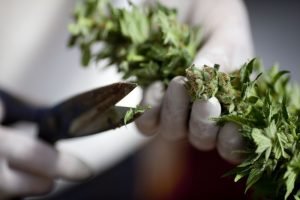
Using the whole plant or a whole plant extract is the only way to get the synergistic benefits that come along with the other “minor phytocannabinoids” in cannabis (which may also contribute to relevant activity). Cannabichromene (CBC) is the third most prevalent cannabinoid in cannabis, and has been shown to be anti-inflammatory, as well as analgesic. Cannabigerol (CBG) can interact with both CB1 and CB2 receptors. It also exhibits GABA uptake inhibition to a greater extent than THC or CBD, which could make it effective as a muscle relaxant for the spasticity seen in multiple sclerosis. CBG is also more effective at helping with skin irritation, pain relief, and other health concerns than THC.
Cannabinoid Ratios
The two main cannabinoids, CBD and THC, contain valuable and distinct medicinal properties and depending if you take them either together or individually, they have different effects on your body. Since CBD and THC are the cannabis plant’s two most prominent cannabinoids, most of the research as of today focuses on the ratio of each.
The understanding of cannabinoid ratios is still in the early stages. Each cannabinoid’s medical and therapeutic properties are distinct. Tetrahydrocannabinol (THC) and cannabidiol (CBD) differ in the way their molecules act on cannabinoid receptors in the brain. THC binds with the CB1 receptor, and CBD binds with the CB2 receptor while also blocking CB1 receptors from binding with THC. This is why a good ratio of THC to CBD can help patients get the maximum health benefits while minimizing the potential intoxicating effects of THC.
Each CBD:THC ratio has a significant role in how cannabis acts in your body. In addition to considering the dosage you use (how much of each cannabinoid), it’s essential to find the correct ratio of CBD to THC. Finding the proper ratio and dose is crucial for determining the optimal protocol for each patient.
There’s no “perfect ratio” with CBD: THC ratios when it comes to how it will work for you specifically. Each is unique in how they’ll react to specific ratios and certain times of the day. One individual may prefer a 2:1 CBD:THC ratio, while another individual prefers a 0:5 ratio. Also, certain conditions might require different terpenoid and cannabinoid profiles along with managing medical cannabis around other drugs to avoid cross-reactions. For a lot of individuals, however, a CBD:THC 1:1 ratio is ideal.
Dosage
The difference between a proper dose and an incorrect dose can mean the difference between a safe experience and discomfort, or even a dangerous one. A proper dose means safe medicine; a bad dose means discomfort that could lead to a dangerous situation. Fortunately, cannabis is remarkably safe; so, patients can find their perfect dose by ingesting it in small increments starting in ranges of 1- 2 mg or ml of whole plant applications. Our recommendation is to meet with a medical professional knowledgeable in cannabis dosing and your ailment.
Avram Goldstein, MD, Professor Emeritus of Pharmacology at Stanford University, stated the following during a medical cannabis conference on Feb. 20, 1997: “We know that there are no extreme immediate toxicity issues (with marijuana). It’s a very safe drug, and therefore it would be perfectly safe medically to let the patient determine their own dose by the smoking route.”
With that said, it’s safe to experiment when finding your perfect dose. Knowing your dose is of utmost importance and therefore should be taken seriously. When you make any purchase of medical cannabis (everything from flower to edibles), always look for the lab results of that product. Laboratories test the premium medical cannabis products to help guarantee your safety.
Importance of Working with A Professional
The most important thing you can do in your journey with cannabis is to work with a professional. Both your body and your specific set of ailments are unique, and there’s simply no such thing as a one-size-fits-all protocol.
Remember that it is essential to work with an experienced cannabis expert when developing your protocol. You must also work with your primary physician to avoid unnecessary interactions with your existing treatment and you must start slow while you learn how your body reacts to new formulations.
Whether you’re considering medical cannabis for the first time or have been using it for decades, the perfect protocol can change and is almost always unique. Working with an experienced practitioner (and taking care to work in conjunction with adjunct treatments instead of against them) will go a long way in ensuring that you have a positive experience and derive the maximum benefits from this fantastic plant.
Watch as Dr. Edward Group III explains why cannabis is an essential part of any cancer treatment plan… and how it can stop cancer dead in its tracks.
Conclusion
Even though cannabis has been used as medicine for thousands of years, we are only at the very beginning of our journey to truly understand and unlock its full potential. Political and socio-economic prejudice have resulted in a world where the use of cannabis can still be a challenge for patients.
Though we have had tremendous insights into the value that this plant has in our own health and wellness, we have only just scratched the surface of our understanding as the research is still in its infancy. Doctors and scientists are required to jump through many hoops to conduct their research, and many are required to travel to distant countries to study cannabis.
That being said, the data we’ve collected so far is astounding: there may be no other plant in the world with such powerful and wide-reaching benefits to our health. From maintaining homeostasis to treating conditions like pain, epilepsy, or cancer, our greatest hope likely resides in a natural plant that’s been right under our noses this whole time.
To learn more about alternative therapies and how to make sure they’re effective, don’t miss our film “Quest for the Cures [FINAL CHAPTER]” where 150 Doctors, Scientists, and Survivors from 25 Countries UNITE to End CANCER!
Editor’s Note: This article was initially published in 2023 and has been updated in 2025.










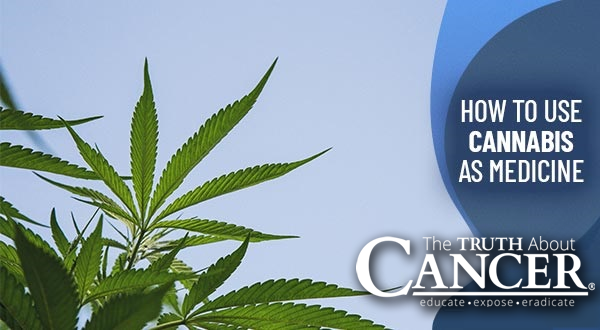
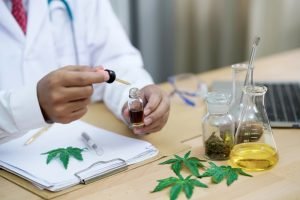
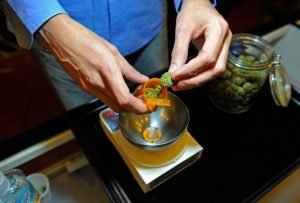








I came from Colorado before moving to Texas. I would get my cannabis from a legal grower and he was the one who explained the different parts of the plant. I still have Mary Jane cream for external healing
You have presented a very informative and encouraging article about a medicinal plant that has huge benefits yet is largely misunderstood in today’s world. Thank you.
Hi from Arizona,
We are Rose and Randy Holmberg.
Can you recommend a good and safe CBD oil?
Sure would appreciate this information.
God bless you all
The Swanson vitamin company makes some good (third party tested) CBD products that are a lot cheaper than comparable brands. Got a top pick from consumer labs too.
BHSales
bhsalesvpweb.com 10x pure check it out! GB
Try Green Roads products based in Florida. I have been very happy with their products and service.
“11And God said, Let the earth bring forth grass, the herb yielding seed, and the fruit tree yielding fruit after his kind, whose seed is in itself, upon the earth: and it was so. 12 And the earth brought forth grass, and herb yielding seed after his kind, and the tree yielding fruit, whose seed was in itself, after his kind: and God saw that it was good.”
And God saw that it was good. That’s good enough for me!
Thank you for sharing with us this great article. I pray God continue to keep both of you invisible to all evil so you can continue to do REAL GOOD as you have till today. Blessings. CeCe
There was no download button to bring up The Truth About Cannibus E book, so I could not download. It went straight to registration for the Quest..I did sign up for the Quest series, but i would still like the Cannibus e book. How do i get it, or do you e-mail it to me. Thanks. and God Bless you all.
Hi Karen!
You should have received an email to download the ebook – try checking your spam folder, and if it isn’t there, please reach out to our customer service team at support@thetruthaboutcancer.com! They will be happy to assist you in any way possible.
Blessings,
Brianna
Greetings: Thank you for being there.
I have bladder cancer which has spread to lymph and rectum. I would love to find someone to guide me in the proper regimen for taking cannabis.
I live in Virginia Beach, VA. Who can I call?
Blessings, William
Can go to your local Medical Cannabis dispensary.
All it takes to cure cancer is oxygen. It may be that all you need to due is frequent deep breathing exercises. See Dr. Otto Warburg. He discovered what cancer is 100 years ago and has been ignored ever since…remember President Reagan had to go to Europe to get his cancer cured.
can you alll so take H202
Can you provide some reliable resources for purchasing clean, organic cannabis for consumption? I live in Texas. Thank you!
Try Charlotte’s web com
My dad has bladder cancer. We would love to find someone to guide the proper regimen for taking cannabis. We live in Dallas, TX.
Thanks,
Information on drugs interaction are rare. Do you know the intersections with new oral anticoagulants such as Apixaban? One of my patient with ALS got a recurrent pulmonary embolism on treatment with apixaban and oil cannabis.
I enjoyed your article on cannabis, my question is, where can I buy a plant or more to begin using it in my smoothies? And also where in Washington state can I find a medical doctor who can subscribe it. When I ask these questions I never seem to get a reply.
Isn’t it a coincidence that marijuana and CBD are outlawed at the same time the Rockefeller’s look over the medical schools to push their drugs made from petroleum. Prohibition wasn’t to stop people from drinking, cars used to run on alcohol and once again the same family had to get rid of the toxic byproduct at a profit!
I live in Europe. I have breast cancer and the treatment completely destroyed my whole body. What to try cannabis. Can you advise my which one is better to buy? Which form? CBD?
Good morning ….. where in Australia CBD oil be purchased. 😀😀😀
have a very nice day
We should all be thankful for the work Ty and Charlene have done and shared, as much as can possibly be shared in these times of overt censorship by mainstream media. So much more information about cannabinoids should be shared with the masses!
Hi Ty and Charlene,
you two are beautiful inside and out. I live in Asia and if you need any help in cooperation against the dark forces that we face at present I would like to fight with you. I am a direct descendant of the Duke of Wellington, who incidently was conned by the Rothschild Jewish monetary force in the defence of then Great Britain against Napoleon, in essence is the world’s enemy along with his many familial and financial friends and associates and bought intellectual hangers on. Money is the real god on this earth and the one who controls it. And as Rothschilds have 57% controlling interest of the Fed as well as controlling most of the nations of the world’s banks its pretty obvious who are our overlords are at present.
Love the way you use history in your work re Farben and chemical medicine, it’s so important that the children are given real history not the fake claptrap our dead countries governments indoctrinate with. Governments are the ideal of people without developed frontal cortexs
let’s hope that God has not forgotten us
William
Please don’t hesitate to contact if you need assistance in any way. Man power only I don’t have much finance.
Does CBD show up in urine blood tests?